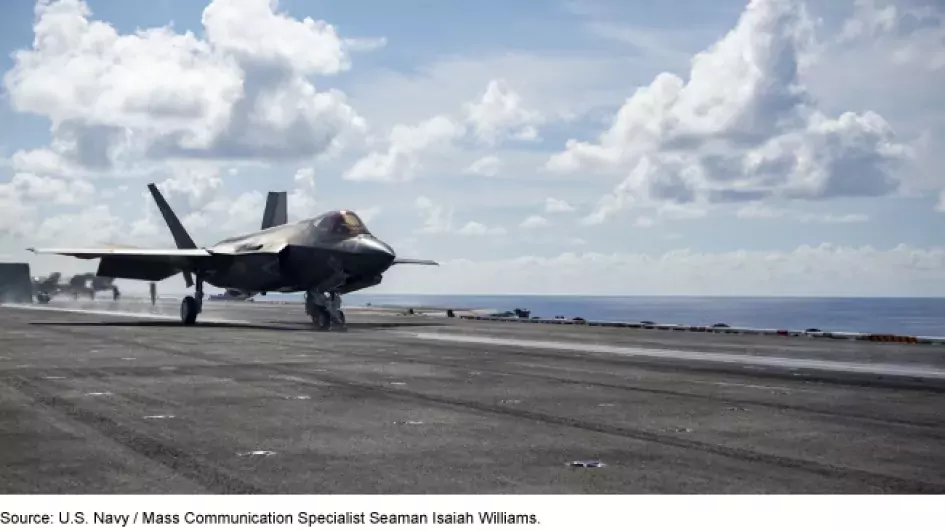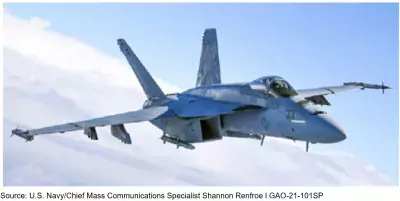Top Gun II Has Arrived! But What’s the Status of the Navy’s Next Fighter Jet?
The much anticipated Top Gun: Maverick (the sequel to the 1980s hit Top Gun) arrived in theaters last week after a three-year delay. Similar to the original, “Top Gun II” showcases some real-life technology and fighter jets being used by the Navy.
But missing from most of the aerial action—both on screen and in real life—is the much anticipated but also delayed F-35 Lightning II, the military’s newest fighter jet.
Today’s WatchBlog post looks at some of our work about the F-35’s struggles, as well as some other aircraft and weapons systems featured in the new Top Gun. All in movie theme of course!
F-35 Launching off Navy Aircraft Carrier USS Carl Vinson (CVN 70)
Image

Costs that Take Your Breath Away
When the F-35 program began nearly 30 years ago, it promised to bring innovation and affordability to the Department of Defense (DOD). However, as we reported last year, the F-35 program has grown to be its most expensive—with estimated costs of $1.3 trillion to operate and maintain over its life cycle.
DOD faces a substantial and growing gap between these estimated future costs and what they can afford—for example, we projected almost $6 billion in cost overruns for 2036 alone.
To quote Maverick’s commander from 1986, “You don’t own that plane, the taxpayers do!” We suggested Congress consider not funding more acquisitions of F-35s unless DOD makes progress in reducing costs to operate and maintain the aircraft. DOD agrees changes must be made to improve affordability and is taking actions to reduce costs.
Highway to the Danger Zone if DOD’s fighter-jet delays and performance shortfalls continue
F-35 safety and testing. In April, we reported that DOD delayed full production of the F-35 because of problems developing a simulator needed for crucial operational testing.
But despite not committing to full production yet, DOD continues to purchase the jets. As we reported, the more aircraft produced before testing is complete, the more it might cost to retrofit those aircraft if issues are discovered later.
F-35 and other aircraft performance issues. We testified in April 2022 that the F-35 was not meeting its performance goals—due in part to not having working engines. DOD is working to improve F-35 engine performance, but also faces performance issues with other aircraft. In late 2020, we also reported over half of the military’s total aircraft fleet did not meet performance goals—including the F/A-18E/F Super Hornet, which is featured in Top Gun II.
F/A-18E Super Hornet over the California Coast
Image

DOD “feels the need for speed” with hypersonic technology
Top Gun II features a stealthy-looking jet creating a shockwave—the result of traveling faster than the speed of sound.
While Maverick is familiar with flying supersonic jets like his F-14 Tomcat in the original film, DOD is developing much faster hypersonic systems that can travel at least five times the speed of sound.
Last year, we identified 70 efforts by DOD, NASA, and the Department of Energy to develop hypersonic technology. Check out a prior blog that explains our recommendations to help agencies plan for and address the challenges they face with such complex systems.
Call Sign: Watchdog
We continue to track DOD’s progress in addressing challenges with planning, developing, and operating its arsenal—including the aircraft and ships in both Top Gun films.
In fact, in 1990, four years after Top Gun premiered (but not because of the movie), we put DOD weapons systems acquisitions on our High Risk List. Since then, with the cooperation and support of Congress and DOD, we have made hundreds of related recommendations along the way. We have also included the F-35 and other military aircraft in our annual assessments of DOD’s weapons programs.
Like Mav and Iceman, we’ll be Congress’ wingman (anytime) to help improve the innovative ways DOD aims to meet U.S. defense and national security strategic goals.
- Comments on GAO’s WatchBlog? Contact blog@gao.gov





